Meat: 10.56 LBS. Ribeye Roast Bone In, wet aged 5 weeks
Servings: 10
Prep Time: 45 days, dry aging
Cook time: 5.5 hours
Cost: $84.16
The intent in preparing this prime rib was to present a memorable meal for our friends. Mission was accomplished as all four agreed it was the best steak they had ever had. What more could a cook want to hear? The following was the process.
10.56 Lb. Prime Rib bone in. Previously wet aged five weeks.
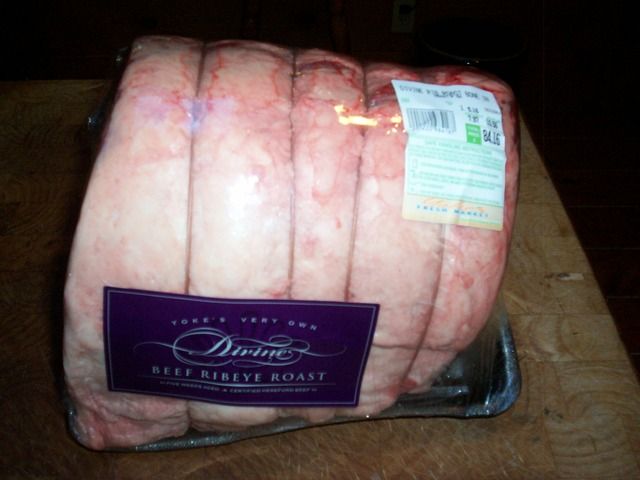
View of marbling.
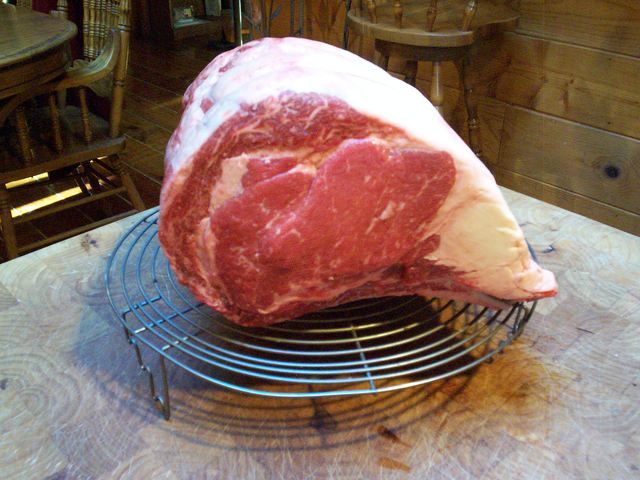
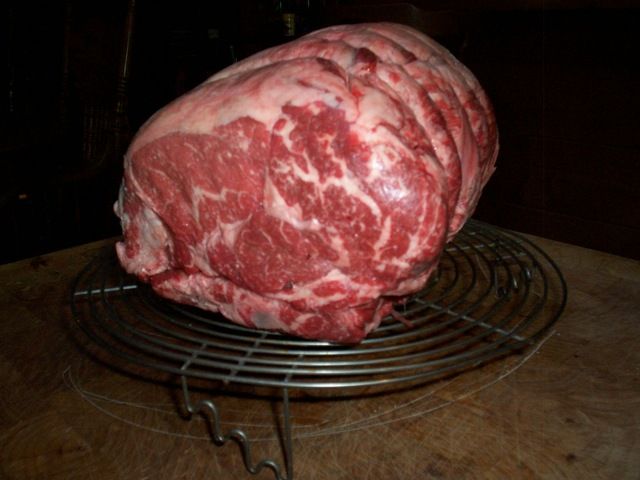
To properly improve the quality of a cut of meat by aging, it should contain substantial marbling. This means that there is fat evenly distributed throughout the meat.
Only the highest grades have this kind of marbling and make aging worthwhile.
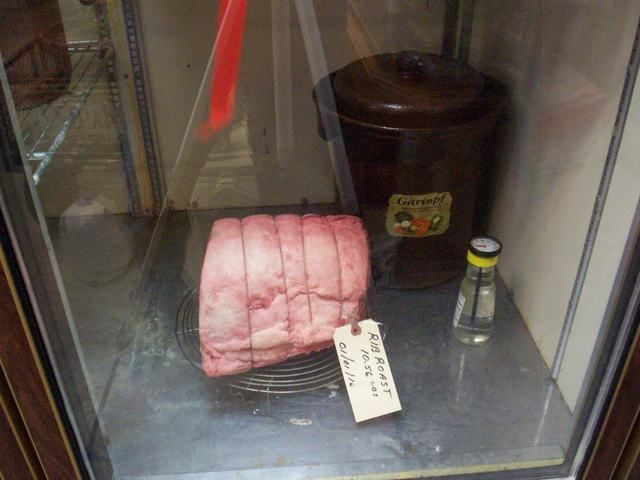
Placed in cooler.
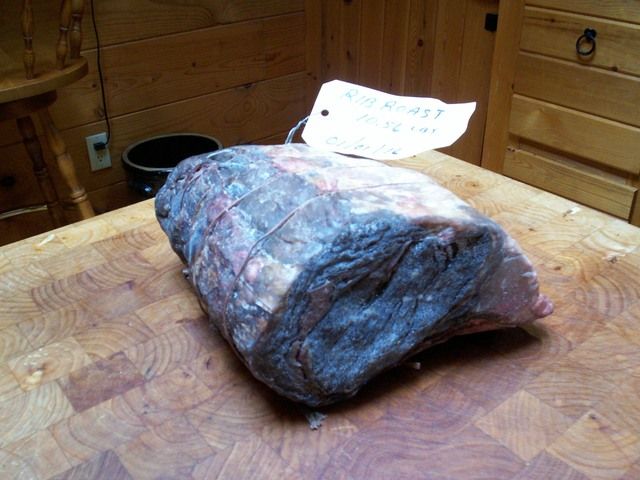
Roast after 45 days of dry aging. The slight amount of mold as seen is normal.
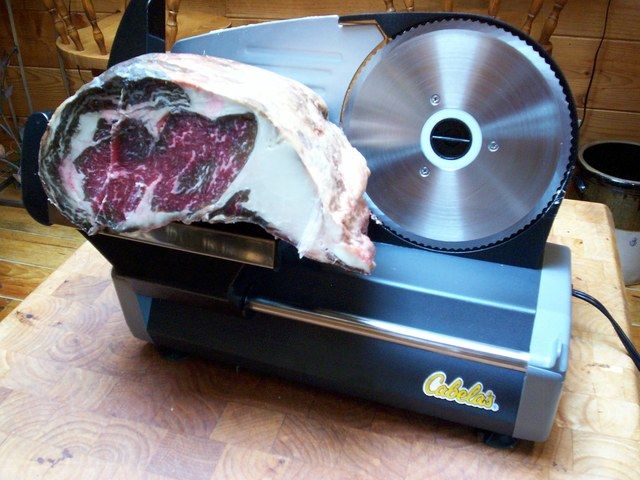
The meat slicer used to remove the dried areas, worked very well.
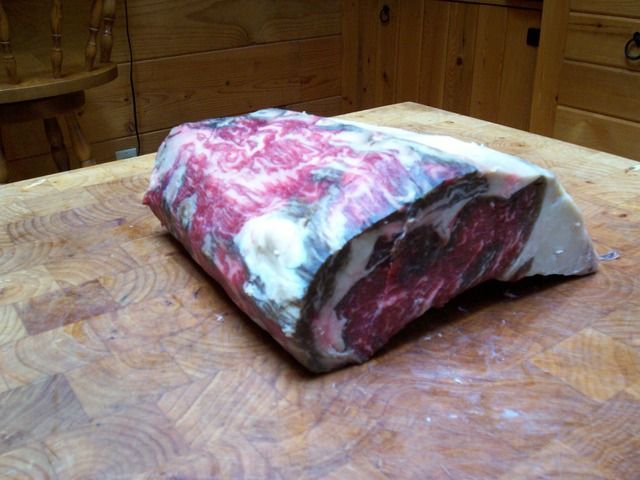
5 Lb. 4 oz. roast after trimming. Total loss from purchase weight, 50%.

Three 20 oz. steaks cut 1 3/4 - 2 inch thick. Five steaks were cut, two went into freezer for later use.
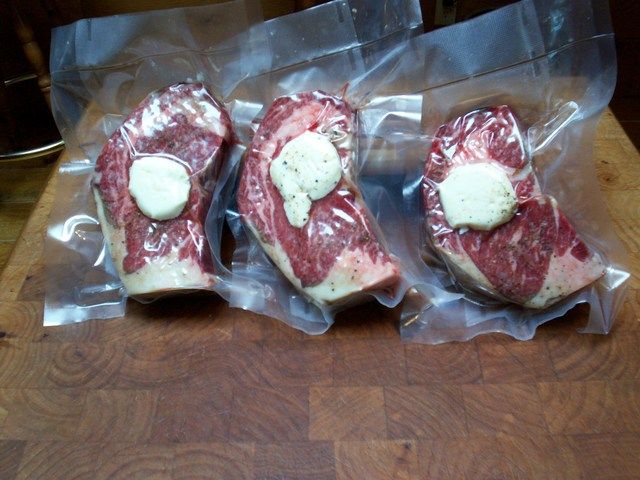
Salt and peppered then vac sealed with two slabs of Alder smoked, made from scratch butter.
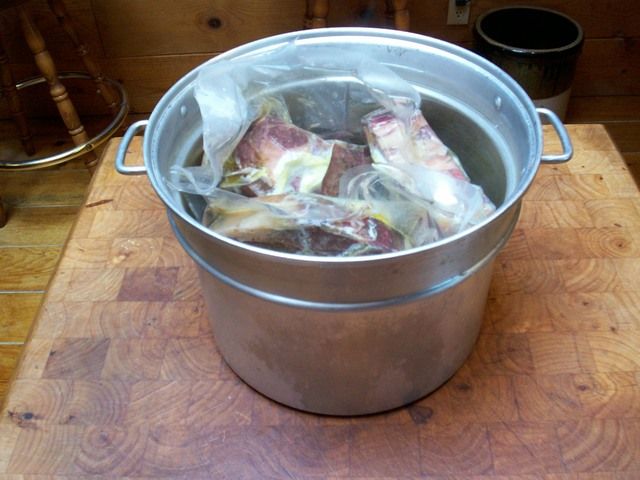
Steaks submerged into pot of 130° water.

Pot placed into Cookshack Amerique set at 140°. Water dropped to 125°, within 1 hour it had reached 130°. The AQ temp was then lowered to 130°. The steaks were then held at 131° for an additional four hours.

Steaks after a total of 5 hours in modified Cookshack sous-vide.
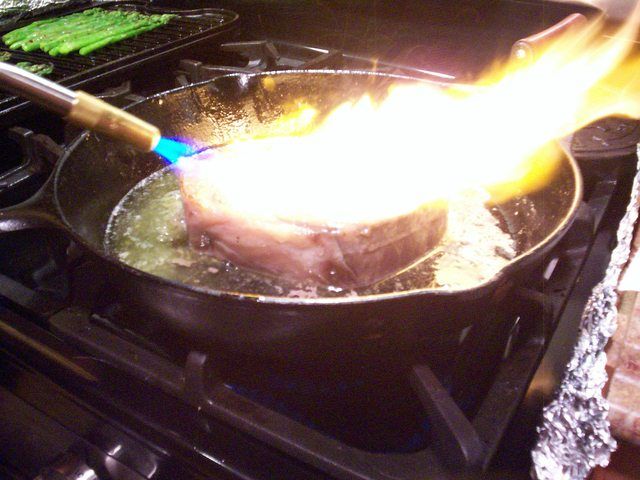
Applying a Super Sear in smoking hot skillet containing butter and oil.
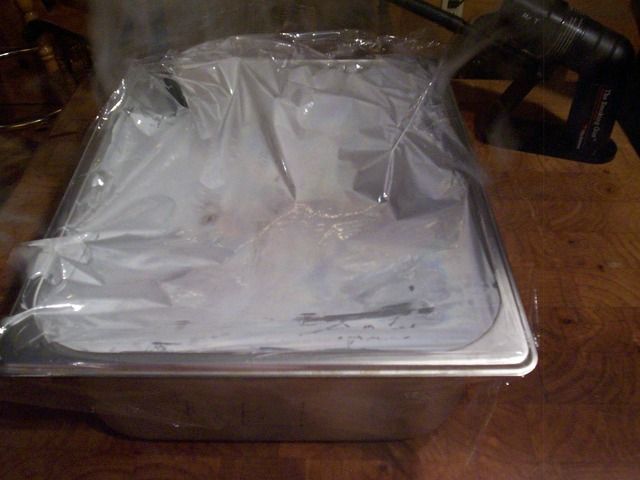
After searing, Hickory smoke was applied using a handheld smoker. This was done just prior to halving and service.
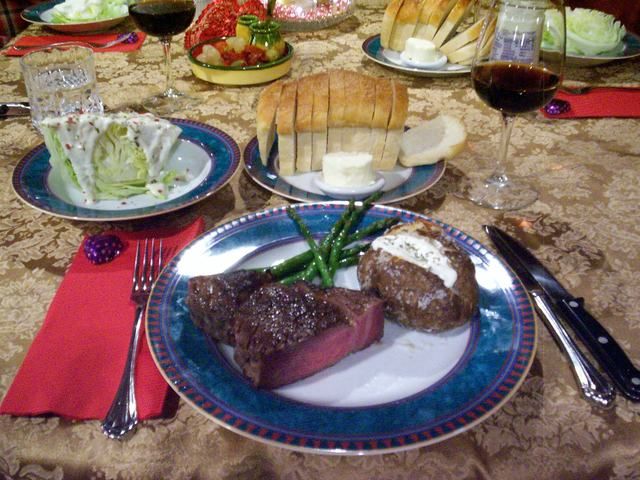
Appetizer: Alder smoked, baby shrimp cocktail.
Entree: Halved medium rare steak plated and accompanied with wedge salad, mini loaf of homemade bread, made from scratch Alder smoked and garlic infused butter, 40 year old French Beaujolais wine, crispy skin baked potato and asparagus.
The wine was some that my daughter and I made in 1975 for the Bicentennial celebration.
Dessert: Carrot cake.
Conclusion: They say a picture is worth a thousand words, I would start with, superb.
Total cost of meat after trimming: $17.00 per pound or $10.62 per 10 oz. serving.
Simple, Cocktail Sauce recipe – Half cup ketchup, minced horseradish to taste, couple dashes of Worchester sauce, dash of fish sauce, hot sauce to taste and a pinch of Kosher salt.
Related Thread: "Ugly Duckling" Dry Aged - Salt Crusted - Prime Rib Roast
http://forum.cookshack.com/eve...572963827#4572963827
..............................................................................................................
The aging of beef is normally thought of as the storage time, in days or weeks, from slaughter until processing. Processing is breaking down the carcass into retail cuts. Beef aging is a biochemical process which breaks down the meat’s connective tissues making it tenderer. This takes place after the slaughter when the lack of oxygen initially triggers rigor mortis, or the hardening of soft muscle tissue.
It is only at this stage that the enzymatic aging starts, which is roughly 4 to 10 days when the meat tissue s turn soft again. However, such a period of time can vary depending upon sex, breed, and age of the animal at the time of slaughter. To further intensify the flavor, the beef can be aged for many additional days/weeks provided it is handled properly.
Beef aging comes in two methods – Dry aging or wet aging.
Dry Aged Beef:
For dry-aging, whole sides of beef or primal cuts are hung in open air at a temperature just above freezing and left to age for several weeks. Not only are the enzymes working on the muscle tissues during this time, but also the meat is slowly dehydrating. This concentrates the meat and changes the texture and flavor.
The benefit of this process is very tender meat with an intense flavor. The downside is that you lose quite a bit of the meat due to moisture loss, which decreases the yield and increases the cost per pound. In addition, the surface of the meat usually needs to be trimmed away before the beef is portioned and sold, resulting in further loss of volume.
Wet-Aged Beef:
Wet-aging is a relatively recent technique that developed along with advances in plastics and refrigeration. In this process, cuts of beef are vacuum-sealed in plastic and shipped to the market. The aging takes place in the 4-10 days between slaughter and sale while the meat is in transit.
Which is Better
It's a matter of preference. The biggest difference between the two kinds of meat is in the flavor. Dry-aged beef can be described as having a roasted, nutty flavor, while wet-aged beef can taste slightly metallic and lacks the same depth of flavor.
Unless the beef is specifically labeled as dry-aged, the meat you buy in the store has almost definitely been wet-aged. Most of us have come to associate the flavor of beef with wet-aged meat, to the point that dry-aged beef might not taste as palatable anymore.
You should definitely try some dry-aged beef if you have the opportunity, you may find the split from the ordinary, delightful. It costs a lot more and is harder to find, but it's worth knowing that there are other options out there.
Cooking Options
Whole roast in oven
Salt crusted in oven
Steaks cut and baked in an oven
Whole roast on grill, indirect heat followed by sear (reversed sear)
Steaks on grill indirect heat followed by sear (reversed sear)
Steaks on grill direct sear
Sous Vide steaks or roast
Searing:
Broiler
Grill
Pan, with or without torch
Note from Mr. T
It is my wish that this thread will encourage other adventurist to give dry-aging a try.
Tom